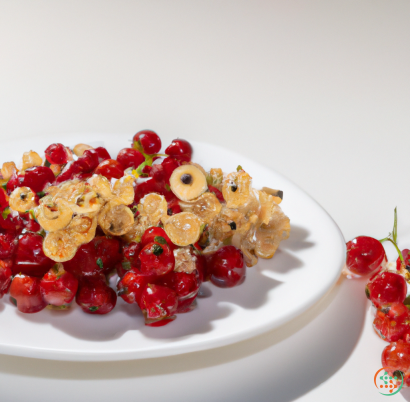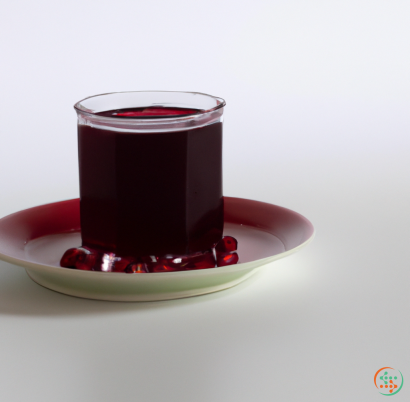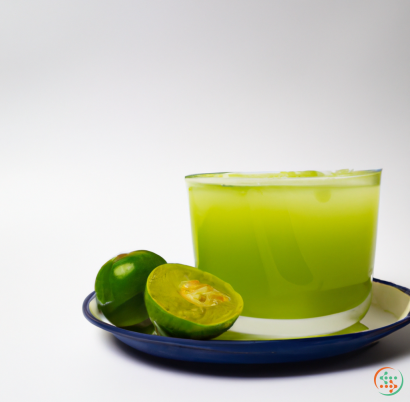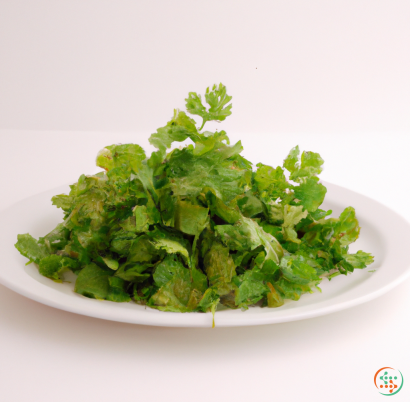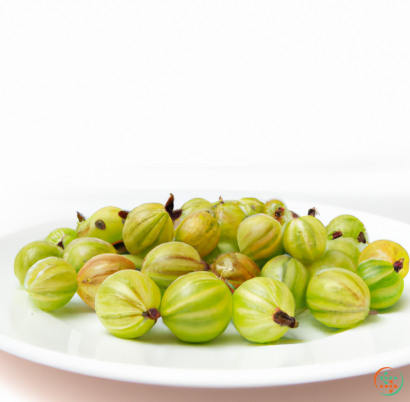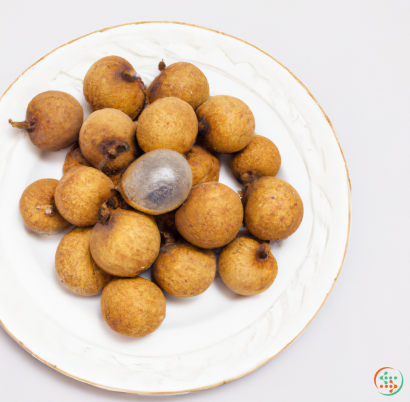Pear
Pears have been part of the human diet for centuries, with references to them found in literature from Rome and Ancient Greece. With their sweet and juicy flesh, pears have a classic taste that can be found in many desserts and beverages. They are also packed with essential vitamins and minerals that provide us with a host of health benefits. In this article, we’ll take a closer look at what a pear is and how we can benefit from including them in our diet.
A pear is a fleshy fruit with a rounded bottom and pointed top that is often described as being pear-shaped. Pears come in a range of colors, from green to yellow and red, and are usually eaten fresh. The skin can range from smooth to fuzzy and sometimes has subtle or pronounced speckles. Depending on the variety, the flesh of pears can have a range of textures and consistency, from soft and juicy to a denser, more crumbly texture.
Pears can be eaten raw and are often used in salads, desserts, and breakfast cereals. They are also dried, canned, and juiced. When cooked, they can be used to make sauces, pies, tarts, and jams.
Pears are packed with vitamins and minerals that are essential for optimal health. They are a great source of fiber, which is beneficial for our overall health, as well as helping to keep us regular. They also contain many other necessary nutrients, such as vitamin C and K, copper, magnesium, and potassium. Eating just half a pear can provide us with 20% of our recommended daily intake of fiber.
Regular consumption of pears has been linked to a range of health benefits. Pears are thought to help improve cardiovascular health and reduce the risk of heart disease, thanks to their high fiber content. They are also packed with antioxidants that help protect our cells from free radical damage, which can slow down the aging process and reduce the risk of some chronic conditions. Adding pears to your diet can also help support a healthy weight, due to the fiber and low calorie content, and boost your overall immunity.
There are so many different ways to enjoy pears, from making a quick snack to adding them to a range of recipes. When choosing a ripe pear, look for one that’s firm and slightly soft around the stem. You can also give it a gentle squeeze near the stem to check for ripeness. When it comes to using a pear in your cooking or baking, consider how it’s prepared first. If you need it to stay firm and crisp, use a firmer pear, while if you want it to become softer and sweeter, go for a ripe pear.
In conclusion, pears are a delicious and nutritious fruit that offer a range of health benefits from reducing our risk of heart disease to bolstering our immunity. Whether you’re eating them raw or adding them to your favorite recipes, there are endless ways to enjoy pears. So why not give them a try and reap the rewards of this tasty and nutritious fruit.
The Perfectly Placed Pear: How Fresh Fruit Travels from the Field to Your Plate
We all love delicious, crunchy pears. But have you ever wondered where pears come from and all that goes in to making them appear on your plate? Read on to discover the complete journey of the perfect pear!
The Origins of the Pear
Pears, like many other fruits, are botanically classified as pomes; they are composed of small, tightly packed cells that surround an inner core, encased in a protective skin. The genus Pyrus, classified in the rose family Rosaceae, describes more than 100 species, over 20 of which are known for their edible fruit.
Wild pears are believed to have originated in Asia, or Central Europe and Europe, and have been cultivated for about 4,000 years. Once found in the wild, the pear was then domesticated and bred for larger sizes, juicier flesh, and more perfect shapes. Today, the top producing countries are China, the United States, Brazil, Italy, and Argentina, which output almost 80% of the world's total pear production.
Selecting Pear Trees & Climate
Pear trees vary in size, shape, and precociousness, among other characteristics. Selection of suitable species and varieties is the first step in successful pear production and depends on climate, soil type, and availability of cold storage. A number of species and cultivars are available, with the most commonly used being European-type pears, such as Bartlett, d’Anjou, and Bosc.
Pear trees grow best in climates that have a relatively cool winter season. This allows the trees to experience enough cold weather to develop flower buds the following spring. Optimal growing regions for pear trees generally range from USDA hardiness zones 5 to 9. In cooler climates, it is advised to choose later maturing varieties of pear trees, such as Seckel and Bosc, to increase the chances of a successful crop.
Planting and Cultivation
When planting pear trees, a certain amount of space must be allotted to the tree in order to receive adequate sunlight and nutrition. The recommended spacing for pear trees is about 20 to 25 feet between each tree, although this can vary depending on the cultivar, soil fertility, and climate. Planting should take place during the dormant period between late fall and mid-winter, when the soil is not frozen.
Once planted, the trees should be regularly pruned. Pruning is important in order to keep the trees healthy and encourage healthy fruit production. Pruning can be done once a year, with most work done in late winter just before the trees begin to wake up from their dormancy period. This allows the trees to focus their energy on fruit production instead of developing new growth.
Pollination
Pollination is key to successful pear production. At least two different varieties of pear should be grown in order for any type of pollination to take place as the flowers need cross pollination in order to produce fruit. Bees and other pollinators, such as butterflies and hummingbirds, are necessary in order to distribute the pollen from the anthers of one flower to the stigma of another flower. Without pollination, the flowers will not develop into pears.
Weather and Harvest
Pear trees need full sun and warm temperatures in order to produce the best crop. Fruit set is most successful when temperatures are between 60 and 70 degrees Fahrenheit, although colder temperatures may still be adequate for production. Rainfall is also important for pears, although too much rain can lead to poor fruit set or potential for insect and disease problems.
Harvesting of pears usually takes place in mid-to late summer. Pears are not ready to be harvested until they reach the golden stage of ripeness, which can be determined by a test of the fruit’s firmness, color, and aroma. To determine whether a pear is ripe, the stem end should give slightly under pressure. Once the fruit is ripe, a gentle upward pull from the stem will release the fruit from the spur.
Packaging and Processing
Once pears are harvested and inspected, they are moved to a packing facility where they are processed and packaged. At the packing facility, the pears are sorted according to size, variety, and grade. The sorting process includes manual inspection, light screenings, and weight sorting. Each tree-ripened pear is hand-picked and inspected multiple times, as automatic machines are unable to sort delicate pears properly.
After the pears are sorted, they undergo a washing and disinfecting process, which is done using a cold-water rinse and conveyor system, and followed by a 1-hour dip in a food-grade solution. This solution is specially formulated to remove dirt and other contaminants from the pears and prevent the fruit from spoiling.
Once the pears are clean, they move on to the packing line. Pears may be packed in foam, plastic, or cardboard containers and placed in boxes for storage and transportation. Labeling takes place at this point, or sometimes even earlier, for improved visibility on the store shelves.
Transporting and Distribution
From the packing house, pears are transported in a climate-controlled setting, usually refrigerated trucks and trains, to the store or market where they will be sold. Quality control continues throughout this process and regular checks are made to confirm that the pears remain in perfect condition.
In the U.S., the majority of fresh pears are delivered by truck. Many times, the pears are picked up directly at the packing facility and delivered to supermarkets, which helps to ensure the freshest and highest quality product. All other pears are delivered to wholesale distributors, who, in turn, distribute them to grocery stores, specialty food markets, and other retailers. Pears can also be purchased online and sent directly to consumers.
Storage and Selection
At the store, the pears are carefully stored in temperature, humidity, and ethylene-controlled rooms, to keep them from spoiling. Most stores keep the pears in individually managed, temperature regulated cases. It is important to select pears that are unblemished and free of bruises or blemishes. The pears should also be firm but not too hard or soft.
Conclusion
The journey from tree to plate is long and complex. It takes careful selection of the right variety of pear trees and cultivation, thoughtful pollination, and skillful harvesting and processing. Then pears must be carefully packaged and transported, before finally ending up in your local store or market.
Enjoying a juicy, delicious pear requires hard work and expert knowledge, but in the end it’s all worth it! The next time you take a bite into a juicy pear, remember that each piece of fruit has had a long and exciting journey before it arrived in your hands.
| Vitamin A | 0.001 mg | |
| Beta-Carotene | 0.014 mg | |
| Alpha-Carotene | 0.001 mg | |
| Vitamin E | 0.12 mg | |
| Vitamin K | 0.0044 mg | |
| Vitamin C | 0.0043 grams | |
| Vitamin B1 | 0.01 mg | |
| Vitamin B2 | 0.03 mg | |
| Vitamin B3 | 0.16 mg | |
| Vitamin B4 | 0.0051 grams | |
| Vitamin B5 | 0.05 mg | |
| Vitamin B6 | 0.03 mg | |
| Vitamin B9 | 0.007 mg |
| Calcium | 0.009 grams |
Daily Value 1.3 g
|
| Iron | 0.18 mg |
Daily Value 0.018 g
|
| Magnesium | 0.007 grams |
Daily Value 0.4 g
|
| Phosphorus | 0.012 grams |
Daily Value 1.25 g
|
| Potassium | 0.116 grams |
Daily Value 4.7 g
|
| Sodium | 0.001 grams |
Daily Value 2.3 g
|
| Zinc | 0.1 mg |
Daily Value 0.011 g
|
| Copper | 0.08 mg |
Daily Value 0.9 mg
|
| Manganese | 0.05 mg |
Daily Value 0.0023 g
|
| Selenium | 0.1 ug |
Daily Value 0.055 mg
|
| Fluoride | 0.0022 mg |
Daily Value 0.004 mg
|
| Tryptophan | 0.002 grams | |
| Threonine | 0.011 grams | |
| Isoleucine | 0.011 grams | |
| Leucine | 0.019 grams | |
| Lysine | 0.017 grams | |
| Methionine | 0.002 grams | |
| Cystine | 0.002 grams | |
| Phenylalanine | 0.011 grams | |
| Tyrosine | 0.002 grams | |
| Valine | 0.017 grams | |
| Arginine | 0.01 grams | |
| Histidine | 0.002 grams | |
| Alanine | 0.014 grams | |
| Aspartic Acid | 0.105 grams | |
| Glutamic Acid | 0.03 grams | |
| Glycine | 0.013 grams | |
| Proline | 0.021 grams | |
| Serine | 0.015 grams |
| Glucose | 2.6 grams |
|
| Fructose | 6.42 grams |
|
| Sucrose | 0.71 grams |
|
| Total Sugars | 9.8 grams |
per 100g
|
| Palmitic acid (16:0) | 0.02 grams |
|
| Total Saturated fatty acids: | 0.02 g | |
| Oleic acid (18:1) | 0.08 grams |
|
| Total Monounsaturated fatty acids: | 0.08 g | |
| Linoleic acid (18:2) | 0.09 grams |
|
| Total Polyunsaturated fatty acids: | 0.09 g | |
| Phytosterols | 0.01 grams |
|
| Total Sterols: | 0.01 g | |

